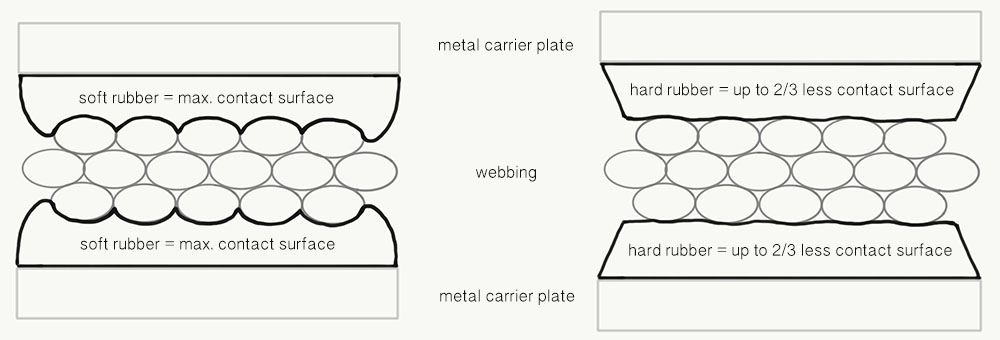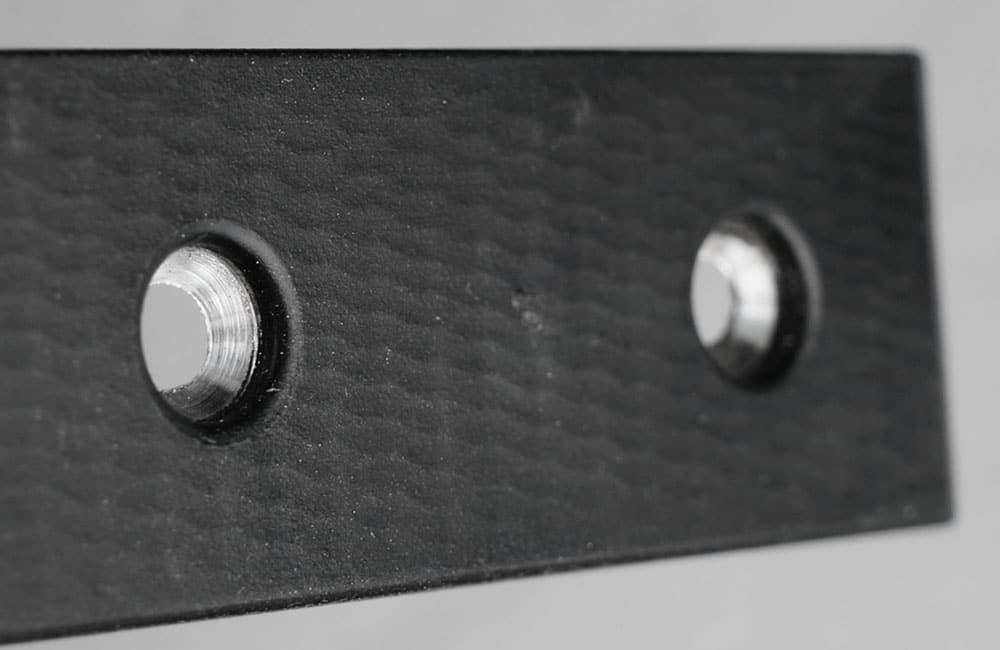Why you should replace the rubber plates at least every 2 years
Why you should replace the rubber plates at least every 2 years
The rubber coating on the lineGrip clamping plates is a custom compound made from 18 specific ingredients. It includes special additives, such as softening agents to ensure softness up to -10°C, high tech compounds to increase mechanical stability, smearing inhibitors to reduce smearing at high temperature, and silica to increase mechanical grip on the webbing.
In combination, these ingredients form a rubber that will create a reliable connection to the webbing, without ever harming it in any way, even if it should slip under certain extreme conditions.
Two of the 18 lineGrip-rubber compound ingredients are special “softening agents” to provide for softness in cold environments. Unfortunately these agents tend to volatilize over time (especially in warm environments), which leads to a gradual hardening of the rubber.
Why is hard rubber a problem?
Slackline webbing is substantially “harder” than the lineGrip rubber surface. To achieve the greatest possible contact surface to the webbing, the rubber coating will deform under pressure and adopt to the surface structure of the webbing, literally embracing every fiber. A hard rubber will not deform sufficiently and therefore have a greatly reduced contact surface to the coarse webbing, which results in less adhesion power. Albeit, the smoother the clamped surface, the lesser will be the impact of this effect.

Illustration of the different behaviour of soft and hard rubber on webbing.
This scetch shows a simplified and magnified illustration of how a soft rubber increases the contact surface to the webbing, resulting in the best possible grip. The total size of contact surface translates directly to friction, which translates directly to adhesion power.
Therefore, to achieve the best grip and guarantee highest reliability, the correct rubber hardness – or softness in this case – is of highest importance. The rubber compound, hardness, and thickness are perfectly harmonized to achieve the best adhesion to webbing, while still offering sufficient mechanicall stability (toughness) to handle the load strain of 15kN without suffering damage.
Learn how to identify the rubber plate age >
lineGrip rubber plate replacement kit >
lineGrip rubber plate replacement instructions >
Catch up on a little history and development background of the lineGrip rubber >

lineGrip Type-3 rubber closeup with 10kN webbing impression-mark
